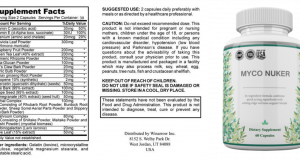The leatherback sea turtle is also known as leathery turtle or lute turtle which is the largest of all living turtles in the world. It is also the fourth heaviest contemporary reptile following the three large size crocodilians. It is one and only living species in the Dermochelys genus and the Dermochelyidae family. It can be easily distinguished from any other available sea turtles by its lack of bony shell. Instead of a bony shell, its carapace is basically covered by the oily flesh and skin. When considering the leatherback sea turtle facts, there is different amazing information about it.
General information about leathery turtle:
Its most common name is leatherback which was name for its special shell that is created by the layer of tough, thin, and rubbery skin. It is then strengthen by the thousands of small bone plates which make it look leathery. Dermochelys coriacea is its scientific name. Its head has an extremely notched upper jaw with the two cusps. It is one and only sea turtle which lacks a hard shell. Rather than the scutes, this leatherback has leathery and thick skin with the surrounded minuscule osteoderms.
Size – Adult leatherback turtles usually grow from 1.3 meters to 2.7 meters nearly 4 to 9 feet long. The largest turtle still recorded was having almost 3.1 meters that is 10 feet long in size.
Weight – Average weight of the adult leatherback is about 660 pounds to 1,100 pounds nearly 300 to 500 kg. The largest leatherback turtle was at 2,019 pounds that is 916 kg in weight.
Age – According to the various researches conducted by the World Wildlife Foundation, the basic lifespan of the leatherback sea turtle will be 40 to 45 years.
Specific facts about leatherback turtles:
Here are leatherback sea turtle facts regarding the diet, habitat, and reproduction of this turtle.
Diet – When considering the fact about the diet followed by this sea turtle, it has scissor like and delicate jaws. Its jaw could be damaged by anything other than a food of soft bodied organism and animals. Jellyfish is a main choice of its actual diet but it also eats sea squid, urchins, fish, crustaceans, tunicates, floating seaweed, and blue-green algae.
Habitat –Although the latest satellite tracking research have proven that the sea leatherback turtles found in the offshore areas, it mainly found in the open sea as far South region of the Africa and North region of the Alaska. It is known to be active in the sea water below 40 degrees Fahrenheit.
Reproduction – Female sea leatherback turtles of age between 6 and 10 will basically mate every two to three years for the reproduction process. During the nesting season, it created a nest with average of 10 days to preserve 80 fertilized eggs and 30 smaller unfertilized eggs in the nest. Eggs develop for about 55 to 75 days to product other species of similar sea leatherback turtles. While this time period, the fertilized eggs are incubated for the growth of the new turtle species.



